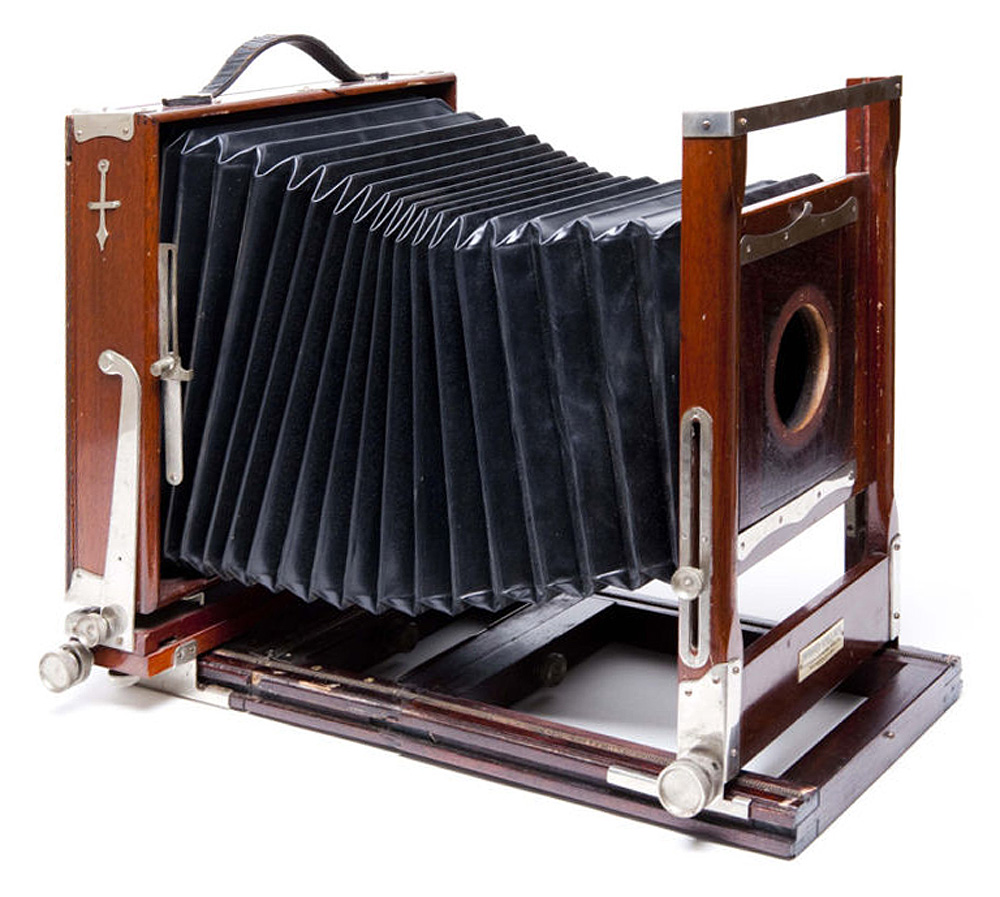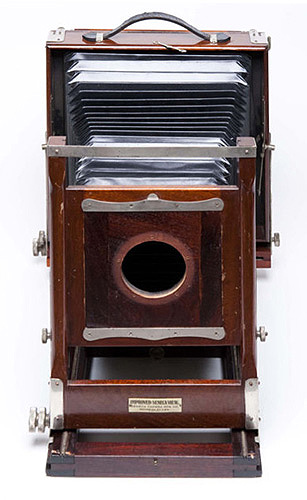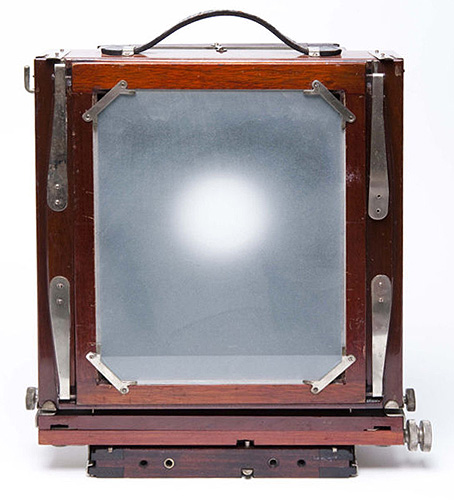Seneca Camera Mfg. Co., Rochester, NY
Seneca View Camera Improved
Variation 4
8x10




Date Introduced: ;
Years Manufactured: c.1910's-1920's
Construction: back and front focus
via rack and pinion (two gear tracks on top of the base rails);
double swing; reversing by removable back;
Materials: mahogany body
(mahogany stain (brown) finish or ebony (black painted) finish, polished
nickeled brass hardware, cherry base, lacquer
finish
Sizes Offered: at least
8x10;
Notes:
The differences between the Seneca View and the Improved Seneca View are: 1) the standards of the Seneca View ride on gears and two slots cut in the rail while the Improved standards ride on gears and the top and bottom of one thick slot, 2) the Seneca View back tilt gear is at the extreme right side while the Improved tilt gear is recessed 1/2#, 3) the Seneca View has no corner reinforcement while the Improved top rear standard clips act as reinforcement for the corners, 4) the Seneca View back is reversed by unclipping two separate clips while the Improved has an easy pull lever for back removal/reversal, 5) the Seneca View bellows is self-supporting while the Improved has the extra control and support of a bellows retainer clip patented Nov. 2, 1905, 6) the Seneca View base parts are connected with round thumbscrews while the Improved has a butterfly-shaped thumbscrews. The Improved is stated in the 1906 catalog to have been patented on November 15, 1904.
The 1905 catalog states that the camera is made of mahogany. By the 1906 catalog, the camera was made of "selected cherry with mahogany finish".
There are two color/finish variations, as shown above. One is a traditional reddish stain and clear lacquer with polished brass hardware. The other was a trend-setting ebonized finish, that is, pigmented black lacquer with polished nickel-plated brass hardware. Ebonized finishes had been used to cover the plain wood of most inexpensive cameras in the 1880's. In this case, however, seasoned mahogany was used for both finish types, and the ebonizing was strictly a different and elegant appearance. It must have been popular; before long, most manufacturers were offering an ebonized or at least darker finish.
The Improved Seneca View underwent minor changes during its long run. For simplicity, these changes are divided into four variations (the numbers of which, unfortunately, have changed over the years as new variations have been discovered), based on the shape of the forward-backward swing hardware on the side of the rear standard. There also has been a change in the length of the first front base extension vs. the second front base extension, which has been ignored for the purpose of assigning variation numbers (Were this to be included, the number of variations would be so great as to be a hindrance to understanding, rather than an aid to understanding).
Seneca View Improved Variation 1: Swing hardware has its thumbscrew in a slot halfway up. c.1895-c.1904. This shape of swing hardware is thought to be the first type, but is not confirmed by catalogs, because it is identical to the hardware on the very early-looking Seneca View Variation 1.
Seneca View Improved Variation 2: Swing hardware has a teardrop-shaped finial. Thumbscrew is at the bottom. c.1904-c.1925. This is the version shown in the many extant Seneca catalogs. It is described as patented in 1904.
Seneca View Improved Variation 3: Swing hardware has a simple round finial, medium size. Thumbscrew is at the bottom. Not in catalogs; thought to be later than Variation 2 since it is simpler in design and thus easier (cheaper) to manufacture.
Seneca View Improved Variation 4: Swing hardware has a simple round finial, similar to that in Variation 3, but smaller. Thumbscrew is at the bottom. Similar reasoning to Variation 3.
References:
Back to Seneca Camera Mfg. Co.
